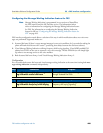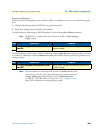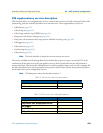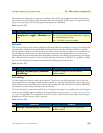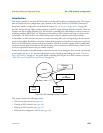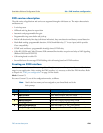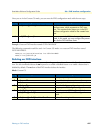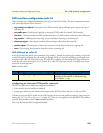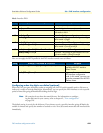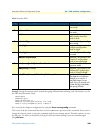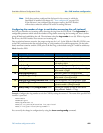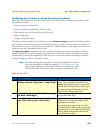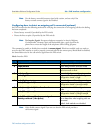
FXO services description 416
SmartWare Software Configuration Guide 36 • FXO interface configuration
FXO services description
The wide variety of applications and services are supported through a rich feature set. The major characteristics
and features are
• 2-wire loop-start
• Off-hook and ring detection supervision
• Automatic and programmable line gain
• Programmable ring count before call pick-up
• End-of-call detection by line drop (call release indication), busy tone detection and battery reversal detection
• Hook-flash sending: programmable duration, H.245 hook-flash relay (“!” in user input) which provides
Cisco compatibility
• DTMF send and detect: programmable interdigit timer, DTMF-relay
• Caller ID (CLID) and Caller ID names FSK command line interface reception and relay to VoIP signaling
(Bellcore/ANSI and ETSI/ITU)
• Call routing based on caller ID
• Second dial-tone for two-stage DTMF dialing with call routing based on DTMF numbers.
Creating an FXO interface
Interface names can be any arbitrary string. Use self-explanatory names for your interfaces to reflect their
usage in your application. After creating the FXO interface, it is necessary to bind the FXO interface. Refer
to chapter 44, “FXO port configuration” on page 542 for details.
Mode: Context CS
You enter Context CS, one of the configuration modes, as follows.
Note Node is the host name you have assigned to your SmartNode and is the
basic prompt.
Step Prompt & command Purpose
1 node> Basic prompt in Operator Exec mode
2 node>enable Enters Administration execution mode
node# The prompt in administration execution mode
3 node#configure Enters the Configure configuration mode
node(cfg)# The prompt in the Configure configuration mode
4 node(cfg)#context cs Enters the context “CS” for Circuit Switch
node(ctx-cs)[switch]# The prompt in the Context CS configuration mode



